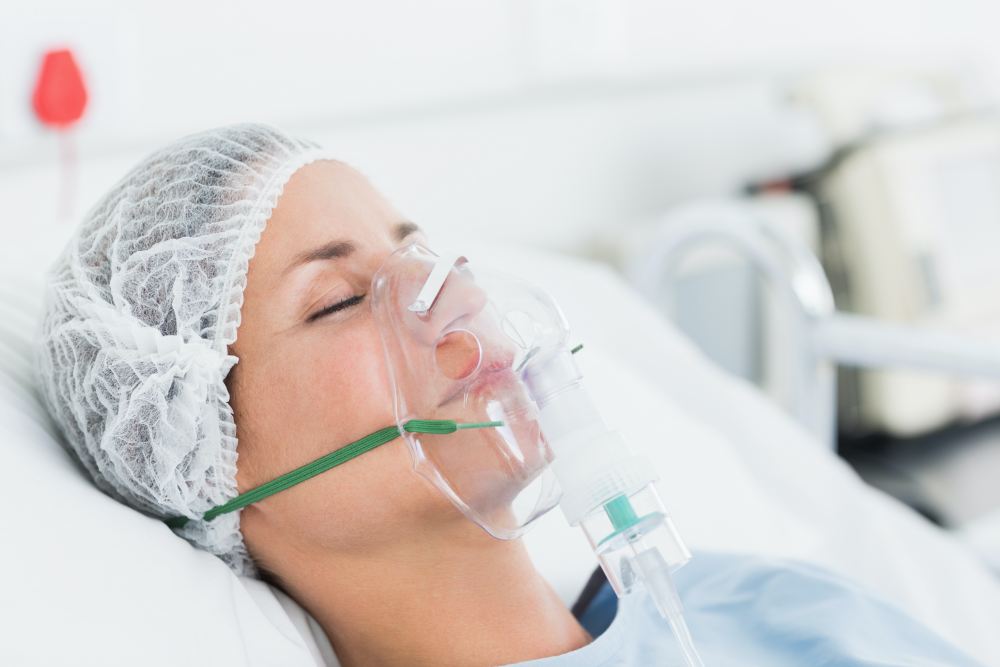Administration of oxygen using a tankless mask, oxygen is usually administered at a flow rate of 6-10 l/min, and the patient breathes in a mixture of oxygen and air that enters through the side openings of the mask. The concentration of delivered oxygen through an ordinary oxygen mask can be calculated using the formula: flow rate (l/min) x 4 + 20 = % oxygen. Therefore, depending on the selected oxygen flow rate, the concentration of oxygen inhaled by the patient can vary from 44-60%.
Use of an oxygen mask without a tank, a regular mask:
Equipment: Personal protective equipment – including gloves, and, in case of coughing or exposure to bodily fluids, a protective mask and goggles. Oxygen source with flow meter. A regular sized oxygen mask. Procedure: Apply personal protective measures. Ensure that the oxygen source has sufficient supply and that the pressure is within acceptable limits. Introduce yourself to the patient if this has not already been done and explain the reasons and procedure for fitting the oxygen mask. Connect the oxygen mask tube to the oxygen source and adjust the flow rate according to the patient’s needs. Place the mask over the patient’s nose and mouth, ensuring a firm but comfortable fit. Attach the elastic band(s) around the patient’s head to hold the mask in place. Monitor the patient’s response and oxygen saturation, and adjust the oxygen flow rate as needed. Record all actions in the medical documentation (see Medical documentation).
Important: Make sure the oxygen flow rate is appropriate for the patient’s condition and needs, and be prepared to deal with any discomfort or potential problems that may arise while using the oxygen mask. IMPORTANT: The patient exhales into the mask, and in order to allow exhaled air rich in carbon dioxide to exit the mask through the side openings, an oxygen flow rate of at least 5 l/min is required.
Therefore, if lower oxygen flow rates are applied to the mask, there is a risk of rebreathing exhaled air and developing hypercapnia.



0 Comments